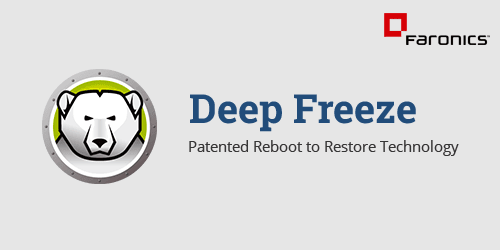Multi-user workstations are a common sight in classrooms, public libraries, and business centers. Not every user interacts with a system in the same way. Some may end up downloading malicious files without knowing or tamper with the admin-defined system settings during individual sessions. Public access computers, therefore, are susceptible to virus infiltration, slow performance, and configuration drifts. Being connected on a shared network, there remains a possibility of potential threats spreading across the entire network. Consequently, IT teams spend a considerable amount of time, effort, and resources to revert systems to a functional state to provide users with uninterrupted and unrestricted computing experience.
In-built system recovery tools like Windows SteadyState allowed IT administrators managing public access computers to roll back systems to a saved configuration state, ensuring the desired protection of Windows workstations. However, after its discontinuation in 2010, potent reboot to restore solutions like Deep Freeze effectively filled the gap. As the most preferred Windows SteadyState alternative, Deep Freeze offers instant Windows system recovery solutions while eliminating the scope of sudden disruptions.
Windows SteadyState: Functionality & Limitations
SteadyState is a free tool made available by Microsoft for the 32-bit versions of Windows XP and Vista. It aids IT personnel to manage and maintain shared computer environments, as found in schools, airports, public libraries, and hospitals. Windows SteadyState provides complete disk protection facility that can revert the changes made by end-users with a reboot, and restore the system configuration back to the desired state as preserved by the IT admins.
Windows SteadyState works by redirecting all the user-made changes in the hard drive into a temporary cache. In its ‘Discard Mode,’ Windows SteadyState can clear these cache when the machine is rebooted while rolling it back to the admin-defined baseline. When the ‘Persist Mode’ is enabled, it can retain the cache intact across reboots and IT admins may choose to retain the changes. Otherwise, the cache will expire after a specified duration. In its ‘Commit Mode,’ Windows SteadyState does not redirect anything to the cache, thus making all changes to have a permanent effect on the system. IT managers can also use this tool to customize user environments. Users can be restricted to perform several actions that are not appropriate for a specific computing environment. For example, it allowed disabling Windows Registry, Command Prompt, or turning off the Control Panel.
Windows SteadyState was discontinued by Microsoft in 2010. This left many public workstations relying on SteadyState vulnerable to malware, viruses, and lasting system changes. Windows SteadyState does not support any 64-bit versions of Windows Operating Systems (OS). Consequently, IT professionals managing systems running on latest Windows editions, encounter a pressing need for alternative solutions holding similar functionality as SteadyState.
Deep Freeze by Faronics is a preferred Windows SteadyState alternative that leverages the patented reboot to restore technology to fill the void left by SteadyState and assures 100% system availability with every restart.
Deep Freeze: A Viable Windows SteadyState Alternative for Managing Multi-User Computing Environments
Deep Freeze is an effective system recovery software that allows IT admins to setup and control a baseline configuration. With each reboot, this reboot to restore solution can revert the system back to that predefined state, while eliminating all user-induced changes. By preserving and protecting the configuration state as established by IT admins, Deep Freeze makes endpoints virtually unbreakable.
Deep Freeze offers benefits over and above SteadyState had to offer. The solution runs well with the latest versions of Windows including Windows 7, Windows 8, and Windows 10, which makes it the most comprehensive and reliable Windows SteadyState alternative. Owing to the non-restrictive nature of Reboot to Restore technology, users have unrestricted access to the web and the system. All changes, accidental or malicious, are wiped clean with each reboot, while Deep Freeze rolls back the system to its original, pristine state. Thus, it empowers end-users to fix common system problems themselves. Consequently, dependence on IT reduces.
Deep Freeze has been one of the most preferred Windows SteadyState alternative among global organizations, to maintain multi-user computing environments. It offers distinct benefits as follows:
One Solution for All Common System Issues: The reboot to restore technology of Deep Freeze makes the restoration of the admin-desired baseline configuration an instantaneous and hassle-free task. It also rids the systems of all undesirable changes across reboots. This aids IT managers to deal with recurring system issues, such as configuration drifts, malware/virus attacks, and unauthorized software installations, with efficacy.
Offering Great Ease-of-Use: Deep Freeze is quite easy to install and deploy on any workstation. All IT managers have to do is to establish a desired configuration state and enable it on the system. Deep Freeze allows IT managers to schedule various maintenance tasks, so as to automate 3rd party software updates as well as Windows updates.
Centralized management of all Workstations: The Enterprise version of Deep Freeze comes with a powerful admin console that can be centrally managed. This enables IT admins to remotely configure, update, and manage all Windows systems connected over a network. It thus provides IT managers with the much-needed control over the targeted workstations, helping them take preventive measures promptly and mitigating any chances of system errors.
Quick and advanced system recovery capabilities of Deep Freeze makes it a coveted Windows SteadyState alternative for IT managers looking to streamline their IT operations in multi-user computing environments. The reboot to restore functionalities and extended capabilities of this solution can help IT teams reduce system maintenance cost to a great extent and ensure their peak performance at all times.



Top comments (0)